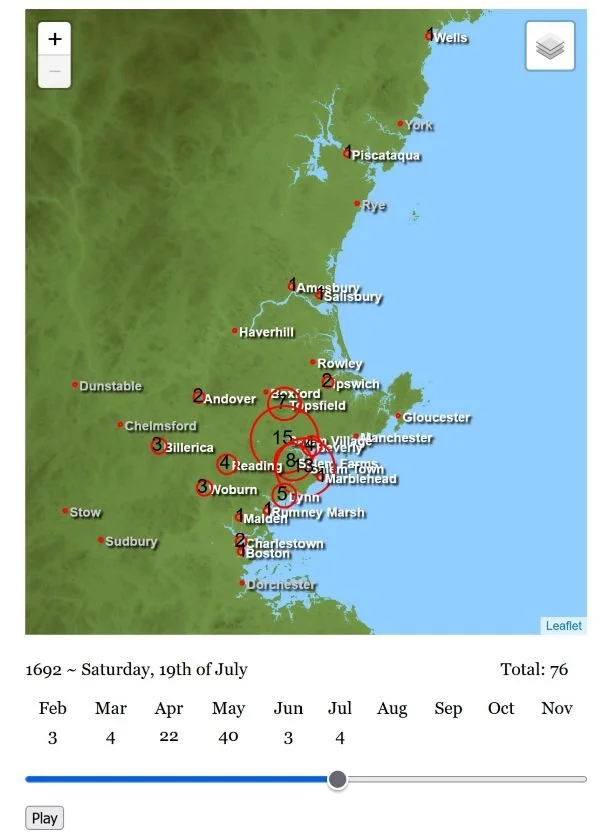Witchcraft in the Archives
No spooky-season blog series would be complete without mention of history’s real-life witch trials. In this post we will visit digital archival collections to learn about the Salem Witch Trials in Massachusetts and the witch trials in Early Modern Scotland.
Salem Witch Trials
The original documents pertaining to the Salem Witch Trials are scattered across numerous physical locations, and so digitized copies are also scattered. To solve this problem, University of Virginia has created the Salem Witch Trials Documentary & Transcription Project. The site acts as both a gateway and an archive.
The largest collections of digitized documents are found at the Congressional Library & Archives and at the Peabody Essex Museum. The former website contains items digitized by the New England Hidden Histories Project, organized by family name. For each name, it notes whether a transcription is available on the UVA Documentary & Transcription Project site. The latter contains almost 550 documents pertaining to the trials, all of which are transcribed in The Salem Witchcraft Papers, available in full on the UVA site.
In addition to transcripts of court records, accusations, etc., the UVA project also provides contemporary diaries and press, as well as later historical treatments. Possibly the most fascinating thing on the site is the interactive Map of Accusations. Press play to watch how accusations spread farther and farther afield from their starting point in Salem Village in March 1692.
Witch Trials in Scotland
The University of Edinburgh’s Survey of Scottish Witchcraft began as a project to teach data science students using real-world data. It has grown into an impressive historical resource providing detailed information about life in Early Modern Scotland.
The Survey’s database can be searched, or can be explored via an interactive map. Beyond the usual - name, date, location - search facets include marital status, socioeconomic status, occupation, verdict, sentence, ritual objects, demonic pacts, and more. Similarly, the map can be filtered by those same facets, but also offers additional visualizations.
Once you find a person of interest you can visit their biographical information, which in turn links to a case record and a trial record. The database does not have digitized documents or full transcriptions, but it does provide basic data along with citations to the original sources.
The first important witch trial in Scotland under the Witchcraft Act of 1563 was the North Berwick trial of 1591. King James I attended the trial where a number of witches were accused of manipulating the weather in an attempt to wreck the King’s ships during his wedding voyage. The King went on to pen a treatise on witchcraft, Daemonologie in Forme of a Dialogue, in 1597.
Ultimately, of the 3,837 identified cases of accusation, the database has names for 3,212 and trial outcomes for only 305. Still, the information provided here - and the format in which it is provided - is a boon to researchers interested in this dark period in history.

